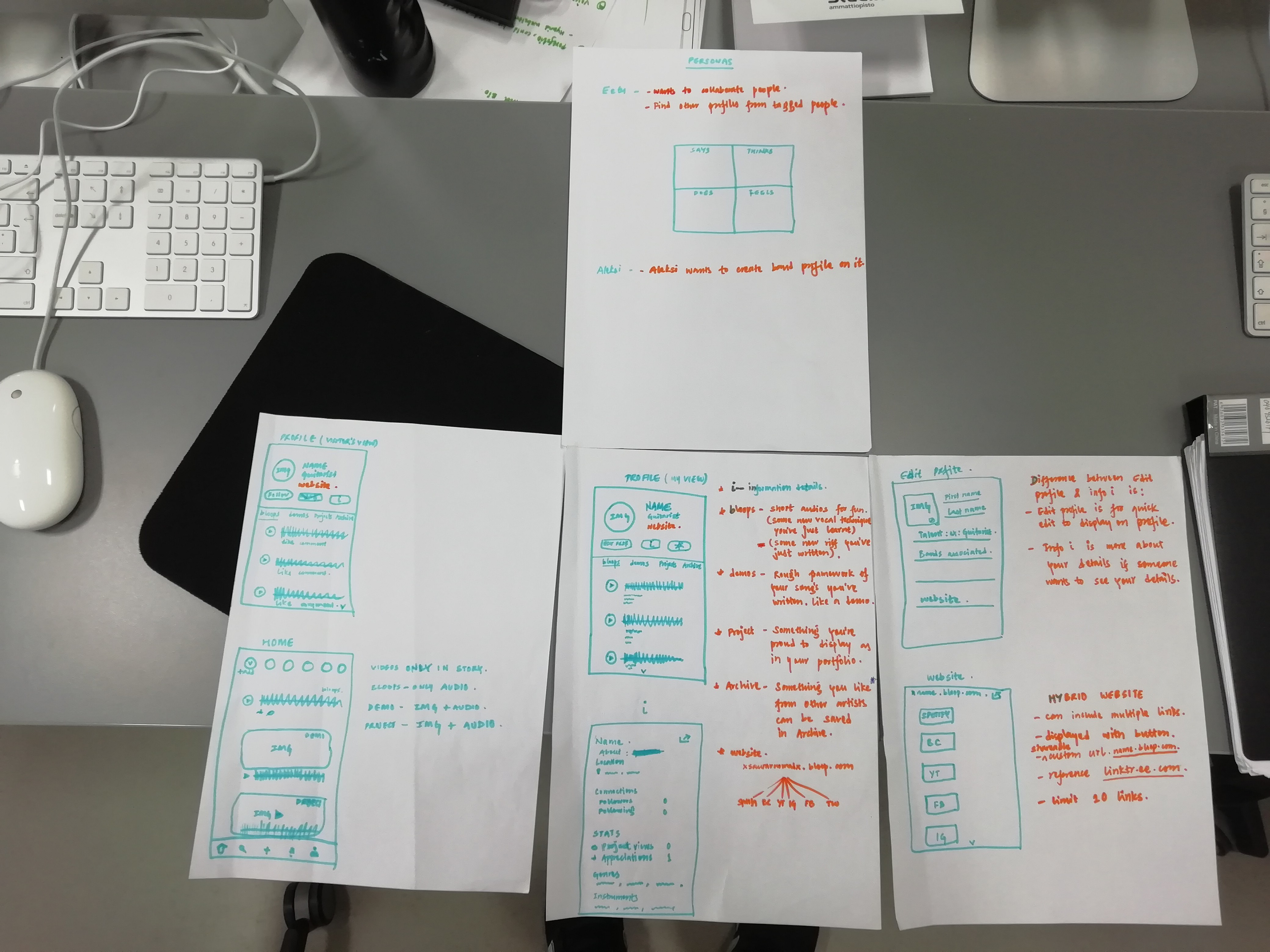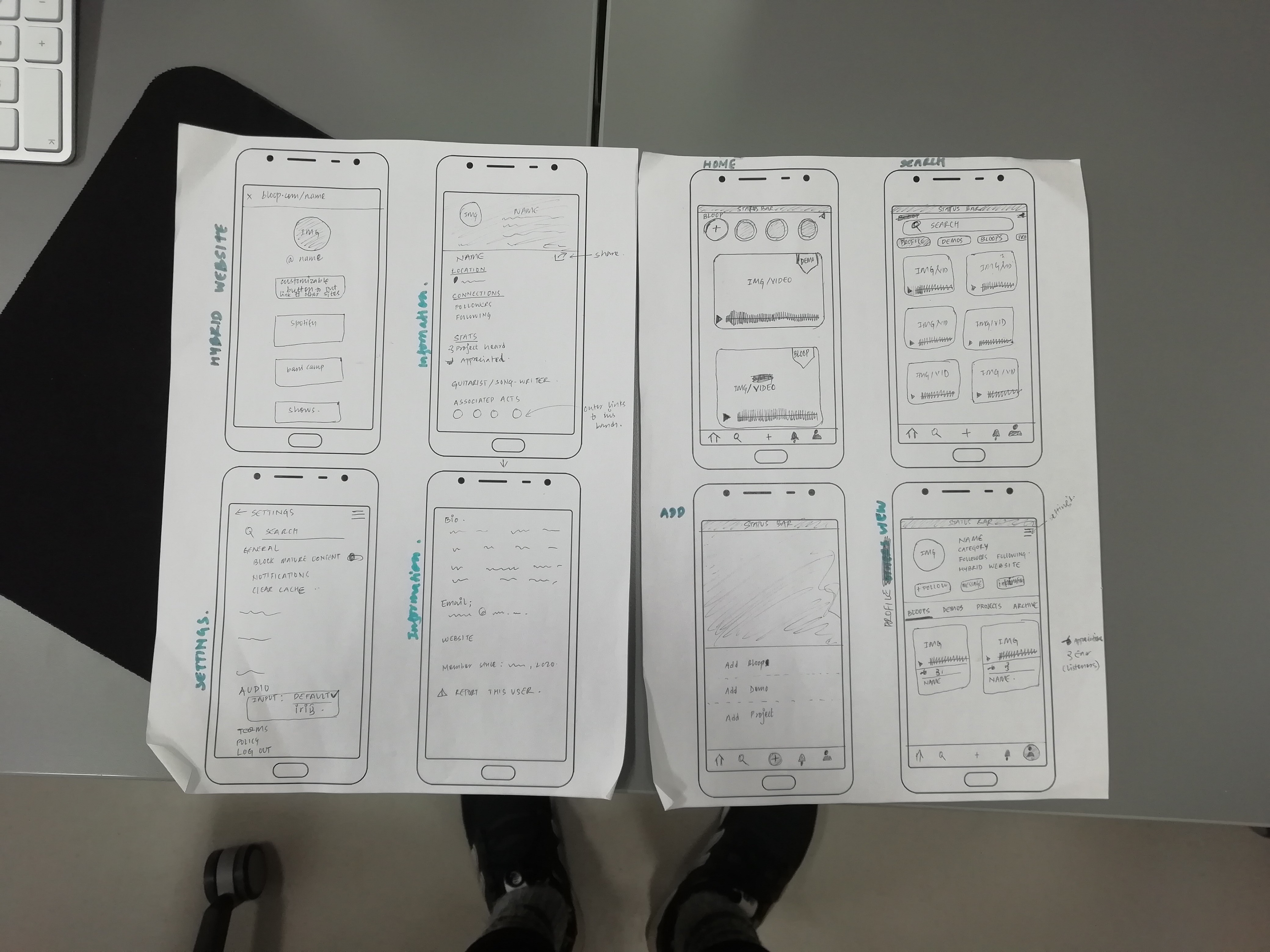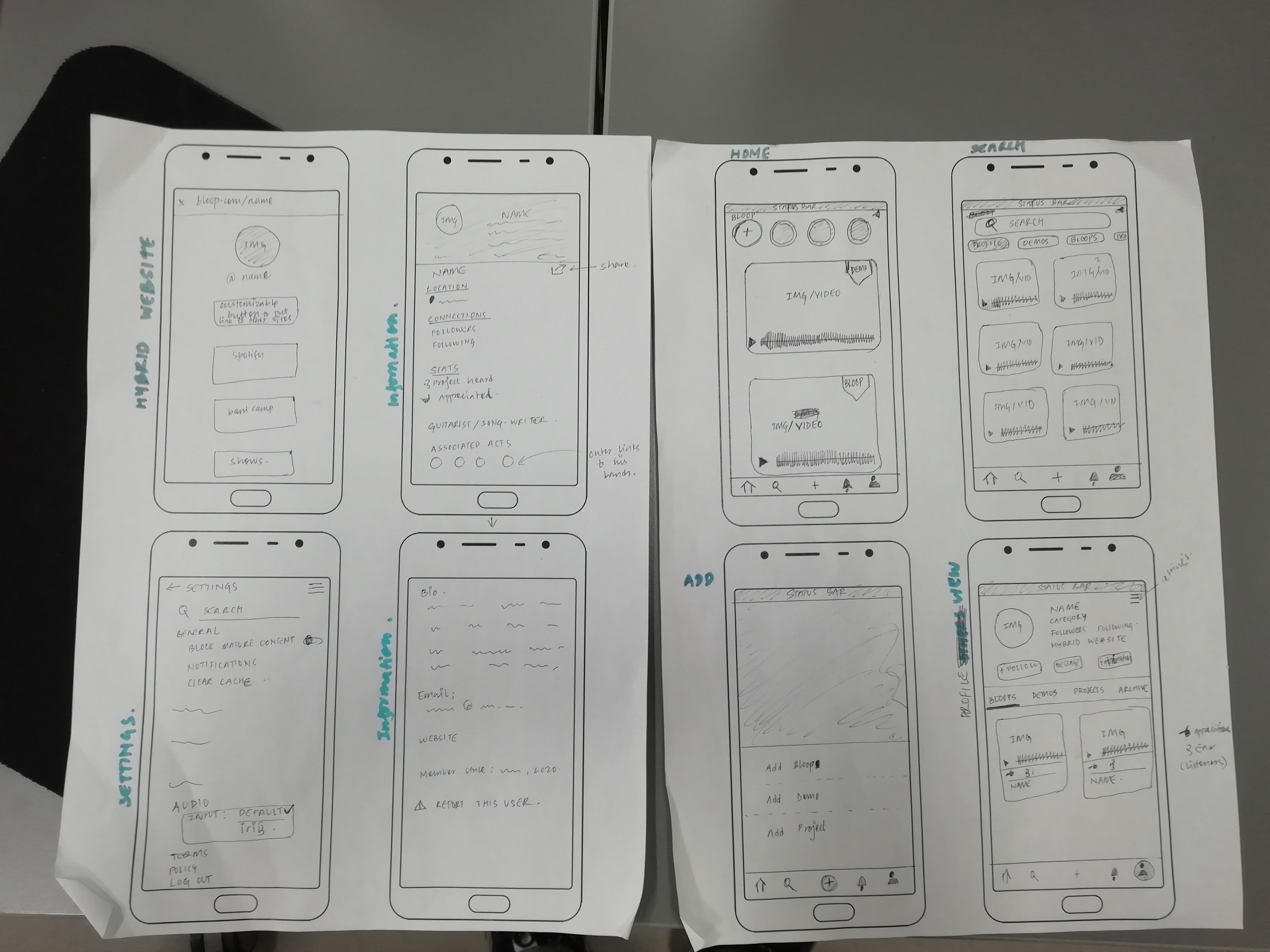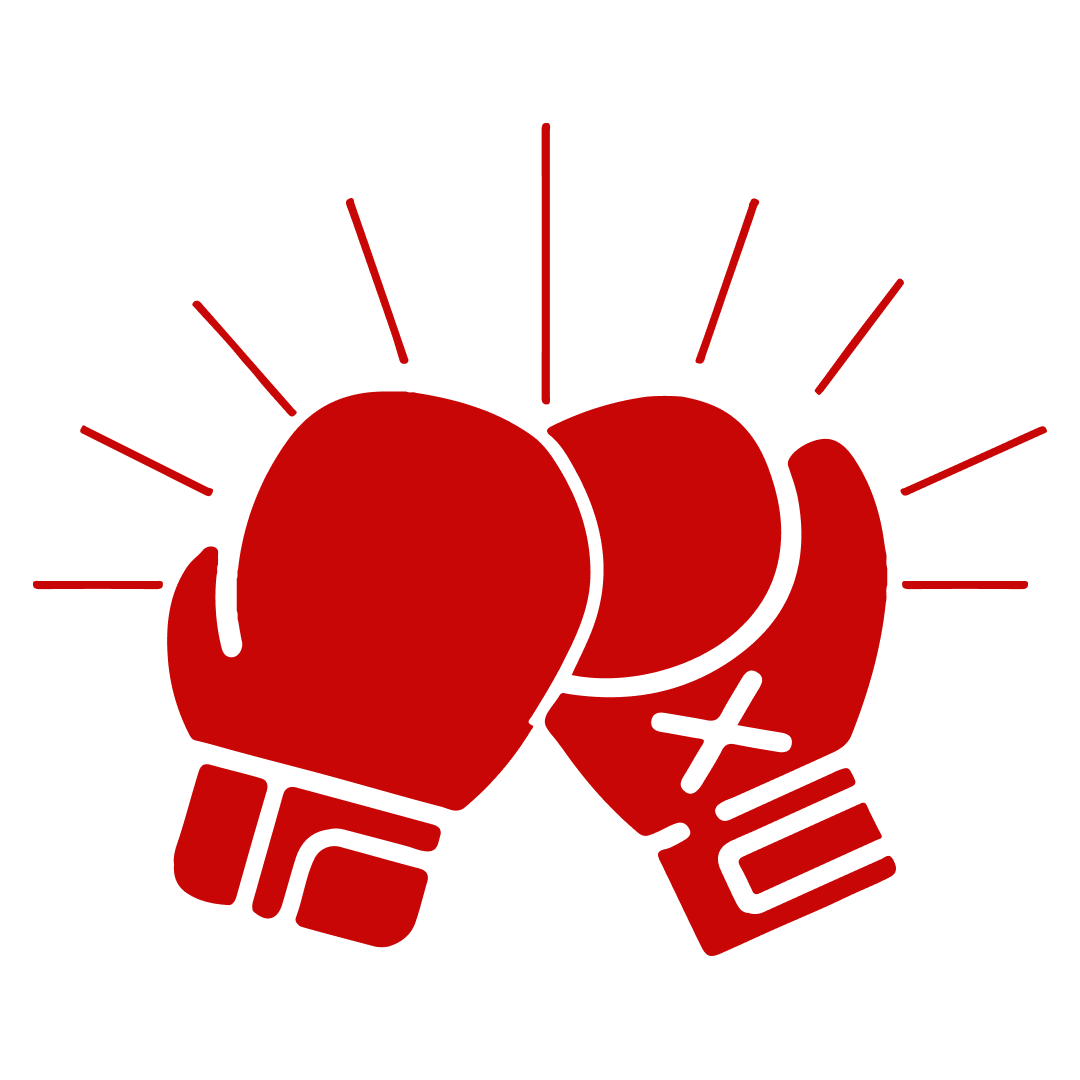It’s like Behance but for musicians. Somewhere in between Instagram and Bandcamp.
It’s been a couple of years since I joined Media College. I was quickly interested in designing more than printing after some time at the college. And after I learned basic design principles, I decided to take my studies further on UX Design. In the process of learning UX, I stumbled upon Behance and I was so fascinated by this app. It’s so precisely focused on designers and there is so much relevant content to learn from. Cannot appreciate it enough. More on this later.
I am one of those people in many of this generation who uses social media profoundly. One of the reasons being branding myself. I am a hobby musician. I do music as my main hobby and I have three instagram profiles. First one, my personal instagram to post my personal stuff food, exercise, mindset and lifestyle in general (shared only with family and close friends). Second, my designer instagram where I post my daily updates on how I am growing as a designer. Third, my musicians profile where I post about my musical updates. I have been quite unsatisfied with how instagram fails me to present myself as a musician. I will mention few points;
1. There is just too much content in instagram in this point that the actual content you want to share gets overshadowed by other contents, specially if its an audio related post.
2. It is mostly focused on showing the lifestyle and photogenic things. It is very visual, which is what they wanted and they did very good on it. On oppose to that, I want audio to be more focused.
3. The categorization of the profile is pretty general and you cannot go into the 'in depth' categorization of who you are.
4. The place to put your biography or information is very less. In fact, quite impossible to put a detailed information about you in your profile. (see the section, profile info/biography)
5. You can write a general description on your post but you cannot put the detailed information on your post. (see the section, project details)
6. There's place for just one website but musicians usually have multiple links to direct their audience towards. (see the section, hybrid website)
It’s just not built for it. And you can look at Behance for designers.
I wanted something like Behance where I can create my profile as a musician, where I can display my projects as my portfolio to other musicians but at the same time post frequent contents like Instagram to get people engaged and connected with me. Few things I wanted to focus was precise information about users and being able to direct people to multiple musical platforms directly from the profile itself.
Understanding How People will perceive this new app
User Research and Interviews
I wanted to see what other musician’s thoughts are on this. So, I did the interview with these three types of musicians;
Professional musicians: Someone who is doing music for more than a decade, has an established band and established image as a musician.
Semi - Professional musicians: People who are doing music for a few years. Has a good-going music career going but studies something else for their profession.
Hobby musicians: People who have been doing music for a couple of years, want to start a band or have a local band. Studies something else and wants to keep music as their main hobby.
Business person: People who are involved in music business like salesman in the music store, show bookers etc.
During this interview, I walked them through my basic ideas about this new app. They were excited about it. Some of them were a bit skeptical and may be thinking it’s just another social media app where they will spend plenty of time without making any precise impact on their career. People wanted certain things from this app, this is what I learned;
Find band-mates: Hobby musicians wanted to find other musicians to do projects together.
“ How do I find other musicians?”
Find other musicians: Some people wanted to find new musicians by tracing the tagged profiles.
“ Can I go to someone’s profile and check them out if they’re tagged in a post?”
Make band profiles: Some people wanted to make band profiles in this new app rather than just personal profiles.
“ Where can I make a band profile? I want to make a band profile in this app to promote my band”.
Better Sound Quality: Professional musicians wanted to have an option to record a better quality audio even when they post frequent small audio clips.
“ I can post my final projects via computer app but if I come up with some new vocal melody or guitar riffs, Do I have a better option to record those rather than just use my phone’s microphone to record. I don’t think a phone’s microphone has a good quality”.
Tag music brands/companies: People who are in the music business wanted to tag music companies or brands.
“ I wanna tag my custom guitar maker when I upload my video, Can I do that?”
“ I want Jack to tag our music store’s profile in his guitar video so that people know about us and we could potentially get more customers”.
Keeping these in mind, I designed the idea & interface. I'll walk you through the basic features of this app;
Home Page
Project Details (When Opened)
Profile
Different category display on profile
Profile Information/Biography & Hybrid Website
STORY
When seeing other's story
Add Bloop
Add Demo
Messages
Search
Final Interaction
The Process
How did I get till here
I started from asking questions to my friends at first. I asked them how would it be if they would have 'this' kinda' app where I explained all the features and most of them were excited about it. I asked to my teacher and my classmates around too. They gave me pretty good ideas and suggestions on how I should start. After that, I started brainstorming.
Brainstorming
I started thinking about the features that I should be able to give to the users that are going to set this app different than the other social media apps and especially how it works in favor of musicians, gives what the other social medias lack at the moment. To solidify my ideas I took interviews with 10 people and made 3 solid personas out of them.
After understanding those personas up close, I came up with these;
Audio-focused: I wanted this app to prioritize the audio as the world is growing more and more towards the aesthetics. I wanted this music app to prioritize audio first. That is why I added audio recording features in almost everything. For example, in messages and a separate category ‘bloop’ just to add audios.
Detailed Info/Bio: When the user wants to see more information about you, I wanted this app to have a detailed in depth information about you. The info section includes, name & category, location, connections, stats, the bands and projects you are associated with, a detailed biography about you and an email address.
Stats & Connections: I wanted to add Statistics along with connection because I want people to see how much impact you are putting on through your music by seeing the actual stats ( listeners & appreciations) rather than just the connection ( followers & following). It gives a clearer picture and keeps things real, more transparent.
Project Details: Once a user clicks the project. I want them to have all the information they need to know about the music they’re playing. On Instagram, there is a single description area and that’s just it. Here, I wanted it to have a display like bandcamp where there is a different section for the details like songs, artist, members, credits, stats etc.
Terminology: I have used terms like ‘Appreciation’ & ‘Mouth of word’ instead of ‘like’ and ‘comment’. It keeps things more neutral and gets people out of that ‘like & comment’ rabbit hole.
Hybrid Website: This is one of the most important features in this app. Musicians always have multiple places to direct their users. Like multiple streaming platforms, social media accounts, merchandise stores, upcoming shows, articles & interviews etc. This hybrid website provides all of those and a couple of buttons that could be added manually. This hybrid website can also be used as an external link as well. You can share just this hybrid website if you don’t want to share your profile itself. The user will get all the places you want to direct them towards. And, if the user wants to see your profile, they can navigate it via this hybrid website.
Post Categories: I have separated four categories for the post. Bloop, Demos, Project & Archive.
Bloop: Rough recordings of some riff ideas you came up with or the vocal melody you were singing in the bathroom and want to take it forward as a project. Bloop is not such a serious post, yet it helps to document your idea and work on it later or even get instant feedback from your connections.
Demos: Demo is slightly serious but a rough version of your project. This can be used to share it with people you want to collaborate to give them the idea of what you are trying to do with that particular demo.
Project: Project is a serious category where you display few of your best publishing. This can be used as a portfolio to show your best when applying for a band or even finding bandmates or music companies or even record labels.
Archive: Archive is a section where you can save other’s music in this section of yours so that you can go back later and check it out again whether to abstract the idea you were interested in or for any kind of reference.
Location & attaching project: This feature of adding location and attaching project will help users find out where you are and possibly get you future collaborators in the same area. The feature of being able to attach projects in your story will direct the users to the project you want them to find in one click. This feature will be available for all the users.
Sketching The Ideas
After I came up with the ideas about the features of this app. I sat down with my pen & paper and started sketching the ideas into the paper, eventually into the low-fidelity wireframes.



Visual Design / UI KIT
User Testing
I went through a multiple phase of user testing for this project. Some of it being, after low fidelity wireframe, after mid fidelity wireframe, after high fidelity wireframe and after the prototype. Many corrections and rechecking in between.
As I went through, the user testing with the potential users who I interviewed before sketching the idea. We stumbled upon many small issues and I changed those small details to make the idea of the app more concrete and more user friendly. One of the major issues one of the users informed was,”I want to upload a bloop in better quality. How do I do that?”
Problem & Solution
This is a music app and to professional musicians ‘quality’ matters a lot. I was missing this. As this app can upload a pre recorded audio as a demo & project. The bloop is recorded on the app itself for which it uses the phone’s microphone. And, now the problem was the user had to compromise the quality while recording bloops. I did not want that to happen and quickly started looking for the solution.
I ran a survey on audio interfaces that can be connected to phone. I stumbled upon many products. One of the most reliable being, irig.
Irig: Irig is an audio interface which can be connected to a phone via headphone input or usb input.
‘An audio interface (also known as an sound card) is an internal expansion card that provides input and output of audio signals to and from a computer under control of computer programs. The term sound card is also applied to external audio interfaces used for professional audio applications’.
In our case, instead of a computer, it’s a phone. It’s portable, it’s affordable and when you connect this as an audio interface to your phone. It shoots the quality of the sound from amateur to professional.
After this solution, I wanted to cherry top it with a virtual amp plugin. So, I dived into the survey again and found that the virtual amp plugins for phones exist. I was very excited about it and started searching for it more. I came through many but I decided to choose two:
a. Amplitube.
b. Tone Bridge
These are two plugins that can be used to add effects to the sound when you are recording. It can be used in vocals, guitars, piano etc. when you’re using the irig. It’s free to download from google play store.
To use this audio interface and these plugins I had to design the user interface that is easy to navigate and easy to use. I came up with is;
Audio Input Options
Adding Plugins
Headspace
I want to put it on the table that this app has more to offer. Right now, I designed its fundamental features and solved it’s primary problem. These are the basic features on which this app runs and it already bridges the gap between social media & musicians. As you can see, this app has few features that are laser-focused on musician's needs.
I wanted to have some headspace in this app in which I can work further in the future on this app. As I was interviewing people from the ‘business’ category of my user study. We came up with a few ideas on how this app can be used from a business perspective. Some of the very effective one being;
Endorsement: We discussed how we can connect companies and musicians together. As music companies and artist endorsement is one of the main tactics on brand advertisement. We came up with an idea that in this music app we’ll include the terminology ‘endorsement’ and will make it available to effectively use it on musician’s profiles.
Tagging music stores: Tagging nearby stores will work in both side’s favour. The musician will promote the local store & help it to be discovered by new people in the area. By doing that, musicians can increase their chance to be endorsed or sponsored by the brands and local music stores.
Advertisement: We can add a feature in the future in this app that only music related companies or brands can put up the advertisement in this app. For example; Recording softwares/plugin brands, music companies, booking agencies etc.
It is not a new thing to let people put their advertisement in your app. But again, we are laser focusing on this app by saying ‘only’ music related brands & companies can put up the advertisement. And, why?
When we do this, the advertisements are relevant because it is musician’s social media. So, the chance of advertisement being effective is very high. When we do this, music companies will prefer putting up advertisements in this app rather than other social medias.
Conclusion
My design process for this was way longer than I imagined before I started. I learned a lot while designing this app. I learned that there is no limit
to design process. Infinite ideas can pop up and you can work your way up through it by not just one approach but various. Critically thinking my initial views on the app and being more concerned about the user’s perspective is one the most important things I’ve learnt from this project. Being empathetic and always standing on a user's shoes throughout the project was very difficult. Even though it’s a class project and my first UX case study, it is a pretty solid product to start with and I’m very positive on taking this project further.
Designing the User Interface was one challenging job too. I had to keep it clear and easy to navigate and choose the colors that gives the app the 'music' feel while keeping it clear and not overwhelming. Name had to be something that clicks, sounded fun and which gets easily printed on memories. The logo had to be something related to music yet simple enough to represent this app.
In today's world, when people uses their apps in their sleep. I had to keep the information architecture smooth so that the users don't get frustrated and quit before understanding what this app even offer. It had to be simple to navigate yet include all the features.
I believe this app will bridge the gap between musicians and today’s social media world, set it apart from the other social media apps and serve its purpose. I’ve demonstrated the fundamental feature of this app and showed the potential impact this app can put on not just the musician’s world but to the whole music business as well.
Our social media culture is very young. Infact, only a few decades. This is a much needed app in today’s world where the social media apps are getting more and more irrelevant, giving hard time for user’s to meet their target. The world needs a second generation social media app where its laser focused on it’s user’s needs. This app can truly change the face of music in social media. It is fun enough to use it as a social media and professional enough to use it as a portfolio. That’s why I called this ‘It’s like Behance but for musicians. Somewhere in between instagram and bandcamp’.
